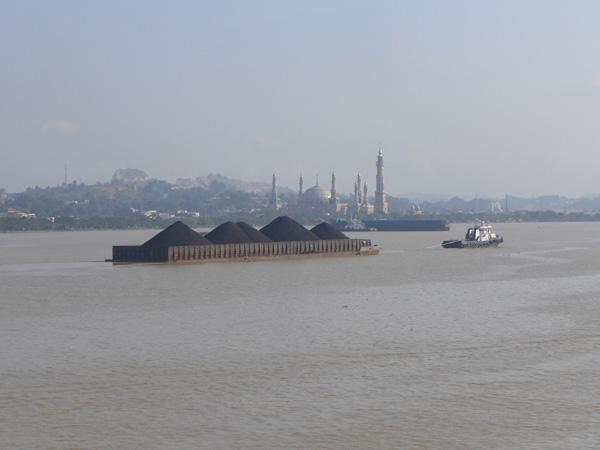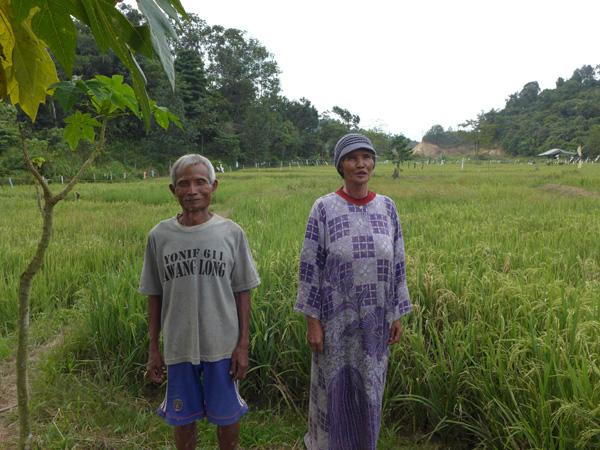Global miner BHP Billiton and Indonesian partner PT Adaro are developing what could become the single largest mine in Indonesia in terms of land area, with BHP owning 75 percent. The IndoMet mine complex in Central and East Kalimantan provinces on Borneo comprises seven coal concessions, which cover 350,000 hectares, or about five times the size of Singapore.
In total, the area has an estimated 1.27 billion metric tons of coal resources, according to Adaro, mainly coking coal used to make steel.
In detailed responses to questions, BHP says it is making progress on developing the first mine in the complex, called Haju. Infrastructure development is underway, including road works and a port along the Barito River. Haju is planned to produce one million metric tons of coal per year. Haju mine itself will cover 660 hectares and initial production is expected in 2015, BHP says.
The company says the current area covered by the seven concessions will be reduced over time and returned to the government, in line with regulations that mandate 50 percent of the exploration area be returned within a set timeframe. That means the mandated maximum holding of the total area of the seven concessions is expected to be no more than about 175,000 hectares, BHP says.
Conservation groups, such as the Indonesian Forum for the Environment (or Walhi) fear the project will cause widespread deforestation in an area of the province that still has large areas of rainforest. “It is expected that only a fraction of this area will be actively mined at any given time, about 5,000 hectares. Additionally, there are other restrictions on how much of this can be used, for example under forestry laws,” BHP said.
“The total area required for the Haju Mine is 660 hectares, all of which is overlapped by logging concessions. Not all of this will need to be cleared. Where possible the Haju Mine project will make use of existing logging roads, with only 7.5 kilometers (5 miles) of new road required outside the mine area to join an existing road network,” BHP said. 
The IndoMet mine complex lies in East and Central Kalimantan, an area already occupied by many resource and agricultural concessions. Map courtesy of Global Forest Watch. Click to enlarge. 
According to data from Global Forest Watch, the region of Kalimantan encompassing the mine complex lost approximately 200,000 hectares of tree cover from 2001 through 2012, representing nearly 5 percent of the area’s forest cover. While some of this may be attributable to misinterpretation of plantation harvesting as forest loss, much of it occurred outside plantation concessions. A significant amount of intact forest also exists in the area, some of which is overlain by logging and mining concessions. Map courtesy of Global Forest Watch. Click to enlarge.
According to the company, an environmental and social impact assessment was approved in 2006. In addition, biodiversity and water management plans have been implemented for the Haju project. Regular monitoring of air and water quality, noise, river sediment, aquatic life, terrestrial fauna and flora in the Haju area will be carried out, the company says, along with extensive engagement with local communities.
BHP says it is supporting conservation initiatives, starting with a two-year project with Fauna and Flora International. Part of this project includes funding for an orangutan reintroduction program managed by the Borneo Orangutan Survival Foundation (BOSF). This program helps orangutans that have been displaced from their habitat in other parts of Central Kalimantan.
The company says it funded the construction of a quarantine facility for up to 50 orangutans at the BOSF Nyaru Menteng Rescue and Rehabilitation Center in Central Kalimantan and has been involved in the safe release of more than 260 orangutans into the wild.
The mine is hundreds of kilometers from the coast and will rely on barges to transport the coal to a port for loading onto ships. This is costly and river transport is available for about nine months of the year because of fluctuating water levels.
A $2.3 billion coal railway to the coast is being considered by the central and provincial governments, but it is unclear if BHP and Adaro would be customers.
This article was originally written and posted by David Fogarty, a contributing writer for news.mongabay.com. For the original article and more information, please click HERE.

